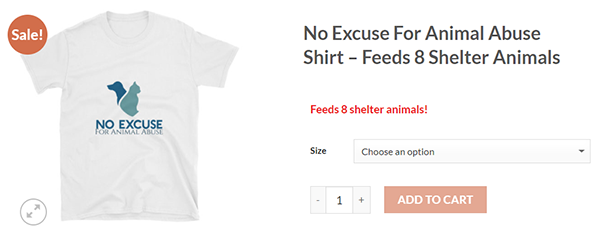Educational Series: A Future for Grizzly Bears is in Our Hands
By Nick Engelfried
Grizzly bears are the largest land omnivore in North America, weighing up to 800 pounds. When standing upright, adult males may reach a height of eight feet. For many people, grizzly bears represent a symbol of untamed wilderness–but their numbers have plummeted to a tiny fraction of what they were prior to Euro-American colonization.
Few animals evoke more powerful emotions in as many people as the grizzly bear, which is also one of the most persecuted and misunderstood mammals on the North American continent. Now, with some policymakers seemingly set on their eradication, the future of these majestic animals is hanging in the balance. It’s in some ways more important than ever that we rethink our relationship with grizzlies.
Before the surge of Euro-American westward expansion in the 1800s, grizzly bears ranged over much of the western half of the North American continent, where they could be found from Alaska to northern Mexico, and in environments as diverse as the Great Plains of the Dakotas, the Rocky Mountains, and the Sierra Nevadas of California. Prior to the nineteenth century an estimated 50,000 grizzlies thrived throughout this vast geographic area, making them one of the most successful and widely distributed large mammals on the continent.
Grizzly bears co-existed with the Indigenous peoples of North America for thousands of years–and in fact, the bears occupy an important place in many Indigenous cultures, some of whom traditionally regard the grizzly as a relative. Though some Indigenous nations hunted grizzlies, the species lived peacefully alongside humans for millennia. Unfortunately, that changed with the arrival of colonists.
Grizzlies are an important part of the food web in the ecosystems where they live. Inland grizzlies feed largely on plant matter and insects, aerating the soil with their long claws as they forage for food. They also eat small mammals and occasionally larger prey. Coastal grizzlies in Alaska are famously fond of salmon, which they consume in vast numbers as the fish return to their upstream spawning grounds.
Although grizzlies pose little threat to people, the pioneers and other settlers who followed them regarded bears and other large predators as pests or “vermin” to be exterminated. Grizzlies were hunted and trapped mercilessly, with the federal and state governments actively encouraging the slaughter. By the mid-twentieth century they had been reduced to a tiny fraction of their historic range.
Help arrived in the form of the Endangered Species Act, which was passed in Congress in 1973, at a time when scientists and the public were beginning to pay more attention to the important roles predators play in ecosystems. Grizzlies were listed under the Act as a protected species in 1975, which ended legal hunting of grizzles and obligated the federal government to create a conservation plan for them. Even so, today grizzlies remain confined to a small fraction of their historic range.
Around 2,000 grizzly bears are believed to now exist in the contiguous United States, with almost all confined to just three states: Montana, Wyoming, and Idaho. In 1993, scientists released a list of six grizzly bear “recovery areas,” or places believed to have a large enough area of undisturbed habitat to support healthy grizzly populations. One of these, in Washington’s North Cascades ecosystem, would extend a substantial grizzly population to a fourth state–however, so far no grizzlies have been reintroduced to the North Cascades, and meanwhile the species struggles to hang on even in other recovery areas where grizzles are already present.
In fact, most of the existing grizzlies in the contiguous United States are confined to just two recovery areas: Greater Yellowstone and the Northern Continental Divide ecosystem (which includes Glacier National Park). Even these populations remain fragile; however, state lawmakers in Wyoming, Montana, and Idaho are currently pushing to allow them to be hunted, a step that threatens to set back conservation efforts. Last year, in anticipation of a possible January decision by the federal government to remove Endangered Species Act protections for grizzlies, all three states announced plans to allow grizzly hunting in the event that their management reverts fully to state decision makers.
As it turned out, the US Fish and Wildlife Service declined to delist grizzlies earlier this year, maintaining their threatened status under the Endangered Species Act along with the protections this designation entails. However, by the end of the month the new Trump administration had announced intentions to re-examine that decision, raising the possibility that federal protections for grizzlies may soon be abolished after all.
In 2020, the previous Trump administration halted plans to reintroduce grizzlies to the North Cascades ecosystem. The plan moved forward again under the Biden administration, but seems likely to be placed on hold again.
Meanwhile, in Alaska–where grizzlies are not protected under the Endangered Species Act–hunting the species is already allowed, enticing wealthy trophy hunters to come to the 49th state in hopes of shooting and killing one of the majestic animals. Alaska also kills grizzlies and other predator animals as a matter of state policy, supposedly meant to “protect” game animals coveted by human hunters. In 2023 alone, the Alaska Department of Fish and Game ordered an aerial hunt in which 94 defenseless grizzlies were shot dead from helicopters.
Alaska’s current attitude toward grizzly management is in some ways reminiscent of U.S. government policy before the mid-twentieth century, when bears and other predators were regarded as mere vermin. It could also be a preview of how grizzlies in other parts of the country may be treated if Endangered Species Act protections are removed.
With future legal protections for grizzly bears in doubt, it is more important than ever for the public to understand the importance of these animals who have lived alongside humans on the North American continent since time immemorial. From the verge of extinction, grizzlies in the contiguous United States have made a comeback in at least some parts of their range–and their continued protection is paramount if the species is to have a future.
As for animal lovers who want to help grizzly bears survive for decades to come, one of the most powerful actions we can take is to spread awareness of the plight of these animals and their need for continued legal protection. Also consider contacting your members of Congress–especially if you live in a state home to grizzly bears–and urging them to support preservation of grizzly bear protections. At this time of peril for North America’s largest land omnivore, the voices of people who care about grizzlies may be what saves these long-persecuted animals from extermination.
Photo credit: Pixabay
Wait, there’s one more step:
Over 1,620,280 Animal Shelter Meals Donated So Far –
Upgrade to a Premium Membership to get a free No Excuse For Animal Abuse shirt, feed shelter animals with the Educational Series and Meal Wheel, sign 100’s of petitions with one-click, remove ads, and promote your favorite petitions to millions!
7 day money-back guarantee for new members. Zero risk.
Premium Membership comes with the following perks:
• Get a free No Excuse For Animal Abuse shirt.
• Feed shelter animals by spinning the Meal Wheel.
• Sign 100’s of petitions with one-click.
• Feed shelter animals with the Educational Series quizzes.
• Remove ads and vote on which petitions are displayed to millions of people.
Our Guarantee:
Cancel your subscription for any reason within 7 days and we’ll refund 100% of your money, as long as you’re a first time member.
Frequently Asked Questions:
How are the animal shelter meals donated?
We donate shelter meals through Rescue Bank because they research all shelters, maintain equitable distribution, and track the meals from their facilities all the way to the rescue groups. This ensures that the donation will be utilized in the most efficient and impacting way.
Why don’t we just donate meals without providing any perks like the Meal Wheel?
We’ve been at this since 2008 and have learned that to really make a difference, we need to get people excited and engaged. Our mission is a serious one, but our methods are playful and educational. We’re serious about doing good, but also want to make it fun.
Who are we?
We are a family of sites that works to protect animals, the environment, and more. Our sites include AnimalPetitions.org and ForceChange.com. We’ve been at this for over a decade and are dedicated to protecting and defending animals and the environment. If we can have some fun and improve the world, then we’re accomplishing our goal!

We’ve Been Doing This for Over a Decade and Others Have Taken Notice:

Testimonials:
“Thank you SO much for the premium feature of being able to sign multiple petitions with one click. Many of us go for hours at a time signing each and every petition and crying as we read them. I have often wished for a way to sign my name on every petition because I passionately support them and they all need our voice. This is the best thing – thank you very much!” -Karilyn K., Premium Member“This is just the most amazing wonderful service that makes me so happy! To be able to feed shelter pets is just the greatest feeling. Thanks again for this, and for all you do for the most innocent and helpless among us, the animals. I’m lovestruck.” Sandra Z., Premium Member
“I love the upgrade option and I am so glad I did it.....it enables me to stand with you and many others to fight for the justice these precious souls deserve! We are their voice!!!! And....I adore helping to feed them as well! The spin the wheel game is fun....and I like doing it everyday to help! Keep up the wonderful work....and I know....every click makes a difference!” Dorothy B., Premium Member
“I am so excited to become a Premium Member and to have one-click signing, as I was spending countless hours signing petitions...not that I mind doing it, but my goodness, there sure are a lot of them. I always hope that my signature somehow helps, because these people that abuse/torture animals, need to be put away. As you can tell, that is my passion, I have such a heart for animals, and I want to be their voice.” Darlene R., Premium Member
“Thank you so much! I love being a premium member and spinning that wheel every day, especially when I land on 4 or, best of all, 5 meals. Thank you for all you do, we are all so grateful for you.” Sandy T., Premium Member
“With deepest Aloha, You have no idea how grateful I am for you!” Jan L., Premium Member
“Thank you for the Premium Membership option. I really appreciate that I can sign multiple petitions with one click. It's great! Thank you for the work you do.” Ashley H., Premium Member
“I absolutely love the Educational Series!” Yvonne L., Premium Member
"I am a premium member and religiously sign every petition. THANK YOU for this platform. I also vote for the petition nearest my heart, sometimes voting globally, sometimes I am caught by an individual animal's plight. What gives me great pleasure is noting that almost always, the percentages have no more than a 6-7% spread. It means that, overall, everyone cares about all of the petitions ALMOST EQUALLY! LOL, I also spin that wheel, and when I get 4 or 5 meals, I dance around the room! I have long maintained that what someone does to a helpless animal, they will do to a weaker human if they think that they can get away with it. Those who abuse, no matter how many legs their victims have, should be punished to the fullest extent of the law." Rebecca E., Premium Member
"I LOVE LOVE LOVE my Premium Membership! Everything and anything I can do to help animals and contribute to justice in the world makes me very happy!" Jan L., Premium Member
"Thank you, I love what you do. My friends and I love the membership because we can sign so many more petitions that we may never had heard of. Keep up the good work." Virginia G., Premium Member
Still have questions? Email us: animalpetitions@forcechange.com
Nick Engelfried Writes About Animals, the Environment, and Conservation for the ForceChange network









